What Happens to the Stomach When We Eat
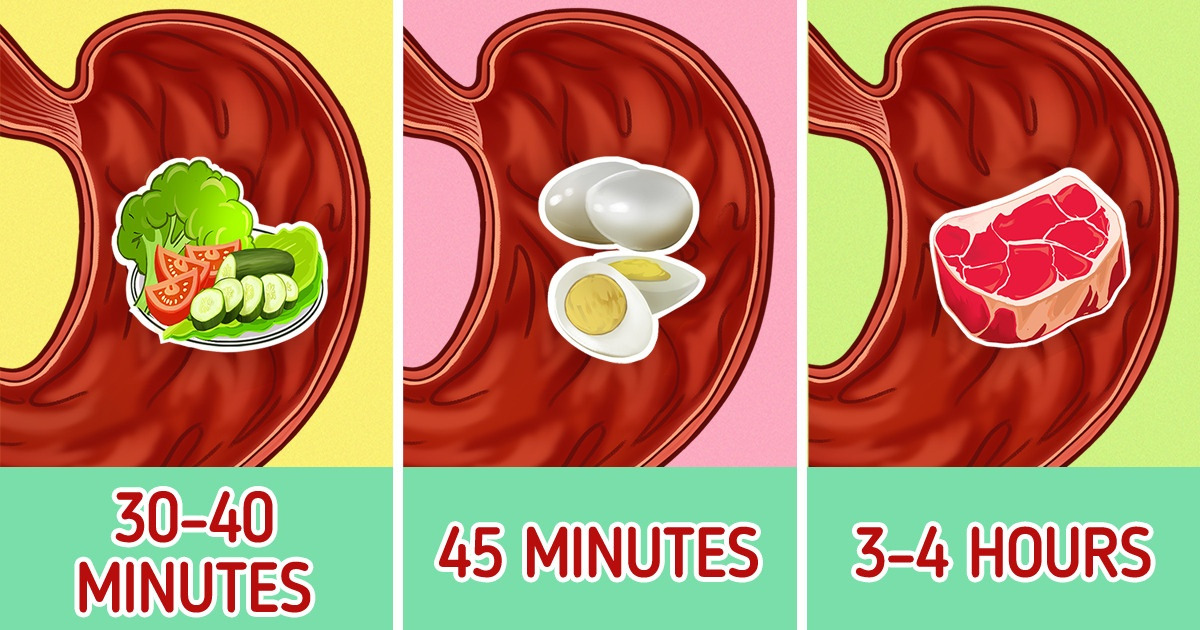
The stomach is a sac-like organ with strong muscular walls. It’s located in the anterior part of the abdominal cavity between the esophagus and small bowel and serves as temporary storage for food. In the stomach, the food is crushed and digested partially before moving forward and going into the duodenum.
5-Minute Crafts is going to tell you what happens to the stomach when we eat and the food enters the organ.
1. The food enters the stomach from the esophagus
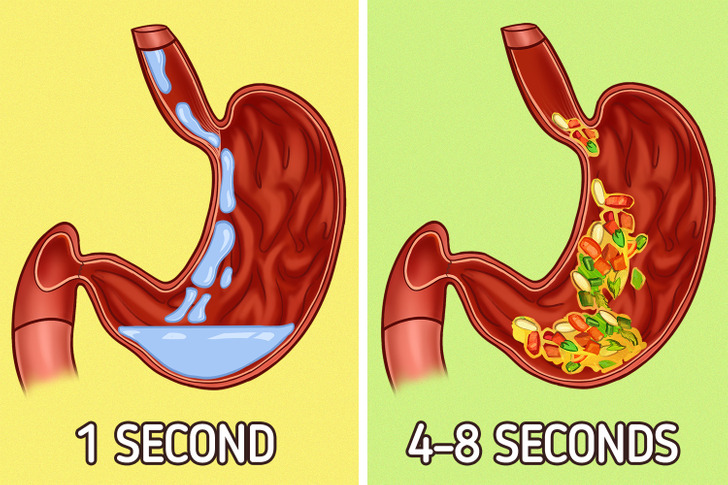
The food enters the stomach right from the esophagus. Most of the time, it’s partially crushed in the mouth and broken down by the ferments of the saliva. The esophagus gradually moves the food down and it reaches the sphincter muscle. The food presses on it, opens it, and moves into the stomach. The sphincter closes to prevent the food from getting back into the esophagus. If this happens, it’s called acid reflux.
Solid food needs from 4 to 8 seconds to go through the esophagus and into the stomach; liquids need just around 1 second.
2. The food turns into chyme
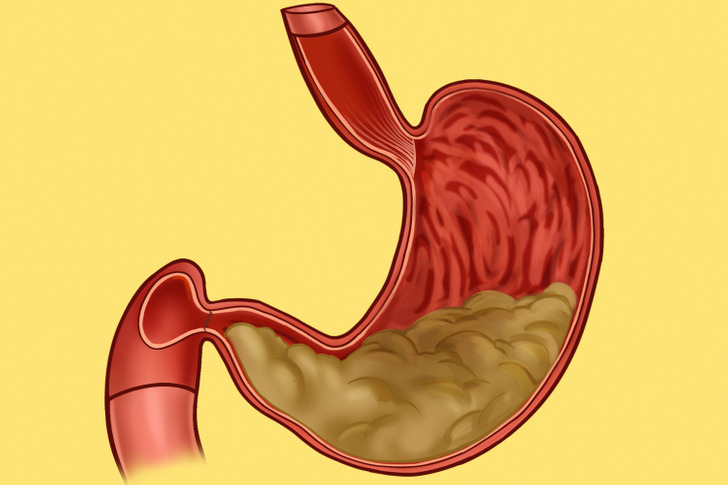
When the food finally moves into the stomach, a series of muscle cramps called peristalsis helps mash, pulverize, and churn food into chyme. Chyme is a liquid of partially digested food and juices that can be moved into the small intestine.
Aside from the mechanical mashing and churning, the food is mixed with the gastric ferments and hydrochloric acid produced by the stomach cells. The acid denatures the proteins, destroys bacteria and viruses, and activates the pepsin ferment responsible for further digestion of the protein.
Protein digestion starts in the stomach, unlike carbs and fats. They are partially broken down in the mouth with amylase and lingual lipase, which are the saliva ferments.
3. Stomach enzymes are produced
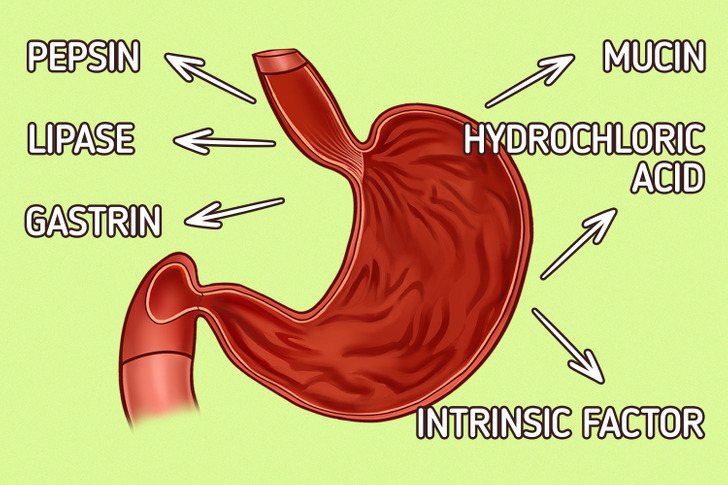
While peristalsis mashes the food and hydrochloric acid denatures the proteins, other enzymes are responsible for breaking down the food:
- Pepsin — the main stomach enzyme that breaks down the protein into smaller particles: peptides and amino acids.
- Gastric lipase finishes the work started by the lingual lipase and helps break down the fats.
- Gastrin stimulates the production of hydrochloric acid and pepsin. It ensures the acidity level is optimal for food digestion.
- Mucin protects the stomach walls from hydrochloric acid.
- The intrinsic factor is a protein that protects vitamin B12 from hydrochloric acid and turns it into a form the body can absorb.
4. Chyme moves into the small intestine
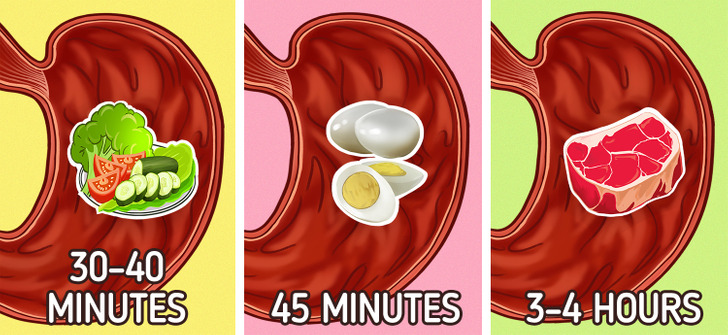
The amount of time the food spends in the stomach depends on its composition. It usually takes more time to break down the food rich in fats and protein than something full of carbs. On average, in order to finish its job, the stomach needs around 4-5 hours. After that, it goes into the small intestine, where the food is finally broken down, and the nutrients are absorbed into the bloodstream.
The stomach is able to expand and contract depending on how much food is in it. When it contracts, the walls make many folds that disappear when the stomach expands.
The expansion and contraction of the stomach walls don’t typically take long — only when the food first enters. After that, the muscles contract, turn the food into chyme, and move it to the small intestine. The contractions persist after the stomach empties and, increasing with time, may become painful.